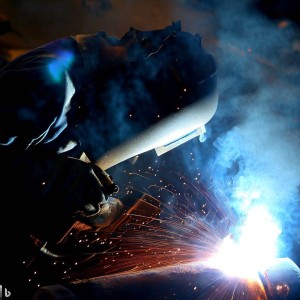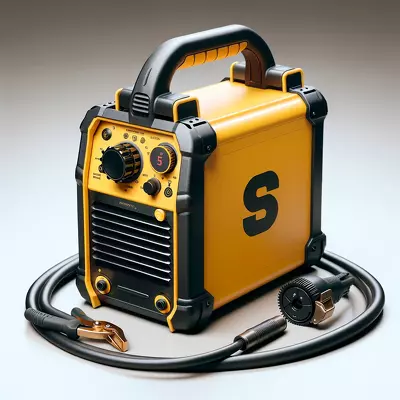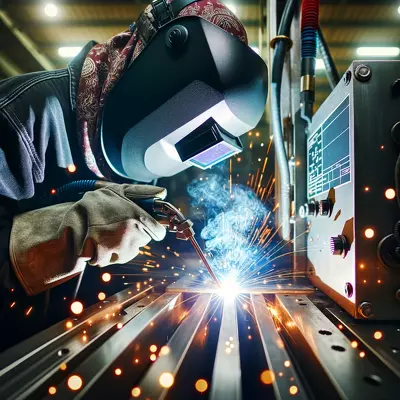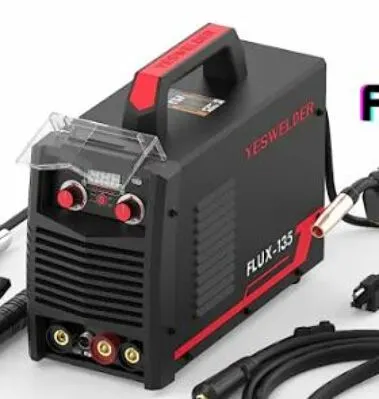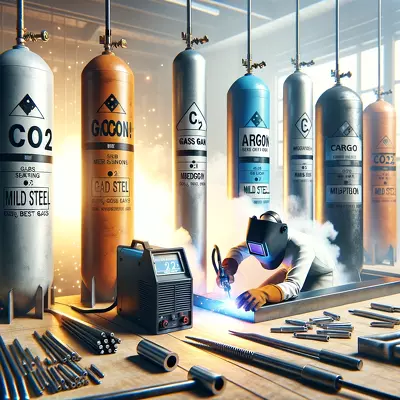Beyond the Basics: Can You Weld Stainless Steel with a MIG Welder?
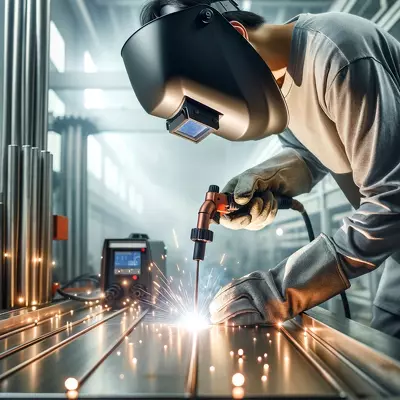
Welding stainless steel with a MIG welder is a practical option for many professionals and hobbyists. This method offers a balance of efficiency and control, making it suitable for various applications. In this article, we explore how to effectively use a MIG welder for stainless steel, covering essential techniques, tips, and considerations to ensure strong, clean welds.
I. Introduction to MIG Welding Stainless Steel
A. Overview of MIG Welding
Metal Inert Gas (MIG) welding, also known as Gas Metal Arc Welding (GMAW), is a process that forms an electric arc between a consumable wire electrode and the metal workpiece. This arc heats the metal, causing it to melt and join.
B. Benefits of Using MIG Welder for Stainless Steel
MIG welding is particularly beneficial for stainless steel due to its faster welding time and cleaner weld area compared to other methods. It allows for better control of thinner metals and reduces the risk of warping or distortion.
C. Potential Challenges
However, welding stainless steel with MIG welders can present challenges such as the need for proper gas coverage to prevent oxidation, the choice of correct filler material, and managing heat input to avoid compromising the steel’s corrosion resistance.
II. Equipment and Materials Needed
A. Choosing the Right MIG Welder
Selecting a suitable MIG welder for stainless steel involves looking for a machine that can handle the specific thickness and type of stainless steel you plan to weld. It should offer variable power settings for precision.
B. Selection of Wire and Gas
The choice of welding wire and shielding gas greatly influences the quality of the weld. For stainless steel, a wire such as 308L is common, and gases like argon or a mix of argon and carbon dioxide are recommended.
C. Additional Equipment for Welding Stainless Steel
Other necessary equipment includes a welding helmet, gloves, protective clothing, clamps, and a stainless steel brush specifically for cleaning the weld area.
III. Best Gas for Stainless MIG Welding
When it comes to MIG welding stainless steel, the choice of shielding gas plays a pivotal role in determining the quality and integrity of the weld. Shielding gases protect the weld area from atmospheric gases such as oxygen, nitrogen, and water vapor, which could otherwise lead to imperfections in the weld. The right gas not only helps in forming a stronger weld but also affects the weld’s appearance and corrosion resistance.
- Argon and Carbon Dioxide Mixtures: The most commonly recommended gas for MIG welding stainless steel is a mixture of argon and carbon dioxide. Typically, a composition of 90% argon and 10% carbon dioxide is used. This combination provides a good balance between the improved arc stability provided by the carbon dioxide and the excellent inertness and weld appearance provided by argon. It helps in achieving a smooth, stable arc with minimal spatter.
- Argon with Oxygen Mixtures: Another effective gas mixture involves argon with a small addition of oxygen, usually around 1-2%. This mixture can help increase weld pool fluidity and improve bead appearance. However, it’s crucial to use this mix cautiously, as too much oxygen can lead to oxidation of the weld.
- Tri-Mix Gas: For critical applications requiring optimal corrosion resistance and weld quality, a tri-mix gas containing argon, carbon dioxide, and helium is often used. Helium increases the heat input into the weld, which can be particularly beneficial when welding thicker sections of stainless steel or for achieving deeper penetration.
- Pure Argon: While pure argon is commonly used for TIG welding stainless steel, it is generally not recommended for MIG welding as it can lead to an unstable arc and excessive spatter. However, in some specific applications, particularly with pulsed MIG welding, pure argon can be suitable.
Selecting the appropriate gas mixture depends largely on the specific type of stainless steel being welded, the desired finish, and the welding position. Trial and error may sometimes be necessary to determine the best gas mix for your specific application. Additionally, consulting with gas suppliers or welding experts can provide valuable insights tailored to your welding needs.
IV. Preparing to Weld Stainless Steel with a MIG Welder
A. Safety Measures
Safety in welding cannot be overstated. Proper ventilation, protective gear, and adherence to safety protocols are mandatory to prevent accidents and health hazards.
B. Surface Preparation
Preparing the welding surface involves ensuring that the steel is clean, free of contaminants like oil or dirt, and properly aligned.
C. Machine Settings
Setting the MIG welder correctly is crucial. This includes adjusting the voltage, amperage, and wire feed speed to suit the thickness and type of stainless steel.
V. Welding Techniques for Stainless Steel
A. Techniques for Starting the Weld
Starting the weld properly is critical in avoiding defects such as cracks or incomplete fusion. This involves securing the torch in the right position and beginning with a small tack weld to hold the pieces in place.
B. Managing Heat Input
Effective heat management is essential to prevent distortion and maintain the structural integrity of the stainless steel. Techniques include using a stitch welding method to minimize heat build-up.
C. Troubleshooting Common Issues
Porosity, warping, and excessive spatter are common issues in MIG welding stainless steel. Adjustments in technique and settings often resolve these problems.
VI. Aftercare and Finishing
A. Cleaning the Weld
Post-weld cleaning is essential to remove any slag or spatter. Brushes and appropriate chemical agents that do not contaminate the stainless steel are used.
B. Inspection and Testing
Inspecting and testing the weld are necessary to ensure it meets the required standards for strength and corrosion resistance. This might include visual inspections and non-destructive testing methods.
C. Tips for Post-Weld Treatment
Advice on post-weld treatment includes recommending suitable finishing techniques such as grinding and polishing to achieve a clean, aesthetically pleasing surface.
VII. FAQs
Q: What is the best type of gas for MIG welding stainless steel?
A: Argon, or a mixture of argon and carbon dioxide, is typically the best shielding gas for MIG welding stainless steel.
Q: Can MIG welding be used for all thicknesses of stainless steel?
A: While MIG welding is versatile, it is especially effective for thinner sections of stainless steel. For optimal results, thinner sections require different techniques, such as TIG welding.
Q: How do I prevent warping when welding stainless steel?
A: Managing heat input by using techniques like stitch welding or pulse welding helps minimize warping in stainless steel.
Q: What are the safety risks associated with MIG welding stainless steel?
A: Main risks include exposure to fumes, risk of burns, and the potential for electric shock. Proper ventilation, protective clothing, and adherence to safety guidelines are essential.
Q: Why is stainless steel challenging to weld?
A: Stainless steel is prone to warping and distortion due to its thermal conductivity and expansion. It also requires inert gas shielding to prevent oxidation during the weld.
Q: What are common defects in MIG welding stainless steel, and how can they be fixed?
A: Common defects include porosity, cracks, and lack of fusion. These can generally be fixed by adjusting the welding technique, ensuring proper gas flow, and choosing the correct parameters and filler material.
Q: Does the finish of a weld affect the corrosion resistance of stainless steel?
A: Yes, an improper finish can harbor residues and lead to corrosion. Proper cleaning and finishing are crucial to maintaining stainless steel’s inherent corrosion resistance.
Q: How do I MIG weld aluminum?
A: To MIG weld aluminum, use a spool gun for better wire feeding, select a suitable aluminum wire (like ER4043 or ER5356), and use pure argon as the shielding gas. Clean the aluminum surface thoroughly to remove any oxide layer, adjust your welder settings to accommodate aluminum’s higher thermal conductivity, and maintain a steady hand and consistent speed to achieve a strong, quality weld.
VIII. Conclusion
A. Summary of Key Points
This article has covered the essentials of using a MIG welder for stainless steel, from equipment and preparations to welding techniques and finishing.
B. Best Practices
Best practices in MIG welding stainless steel include thorough preparation, careful heat management, and proper post-weld cleaning and inspection.
IX. Suggested Readings
Before diving deeper into the world of welding, it might be beneficial to explore some authoritative texts that cover both fundamental concepts and advanced techniques in detail.
- “Welding For Dummies” by Steven Robert Farnsworth: This book offers a straightforward approach to mastering the basics of welding, including MIG welding.
- “Metallurgy and Weldability of Stainless Steels” by John C. Lippold and Damian J. Kotecki: This detailed guide discusses the properties of stainless steels and their challenges in welding.
- “The Procedure Handbook of Arc Welding” by The Lincoln Electric Company: A comprehensive resource that provides valuable insights into the technical aspects of arc welding processes, including MIG welding.
Exploring these readings will enhance your understanding and skills, ensuring you are better equipped to tackle the challenges of welding stainless steel with an MIG welder.

